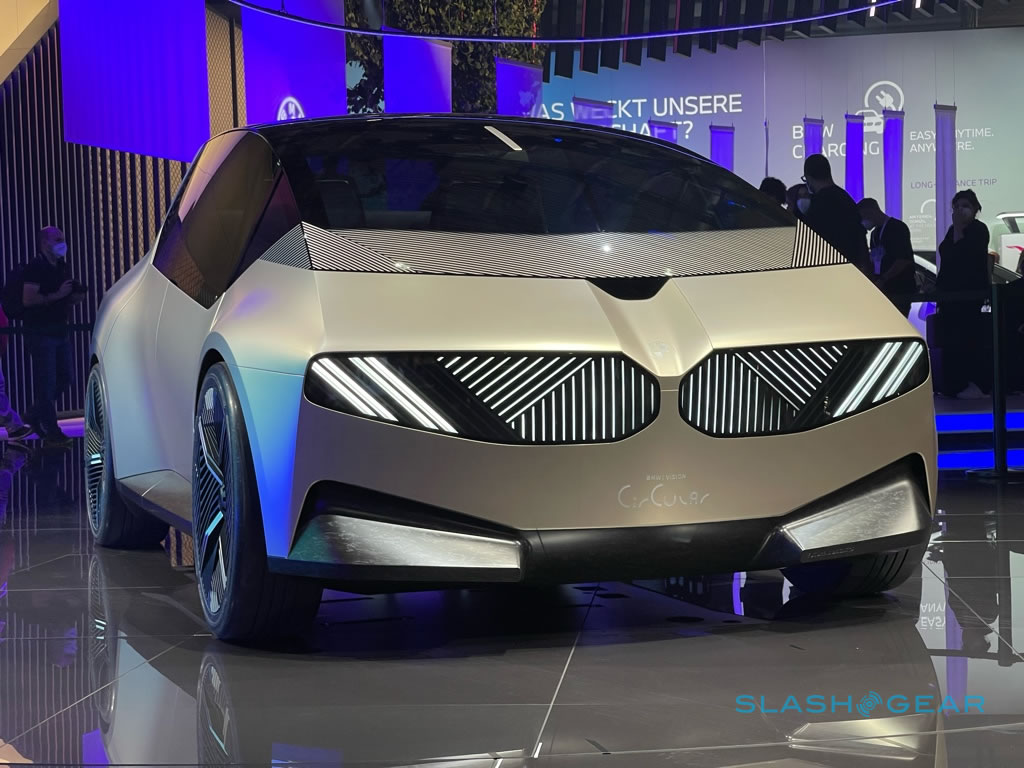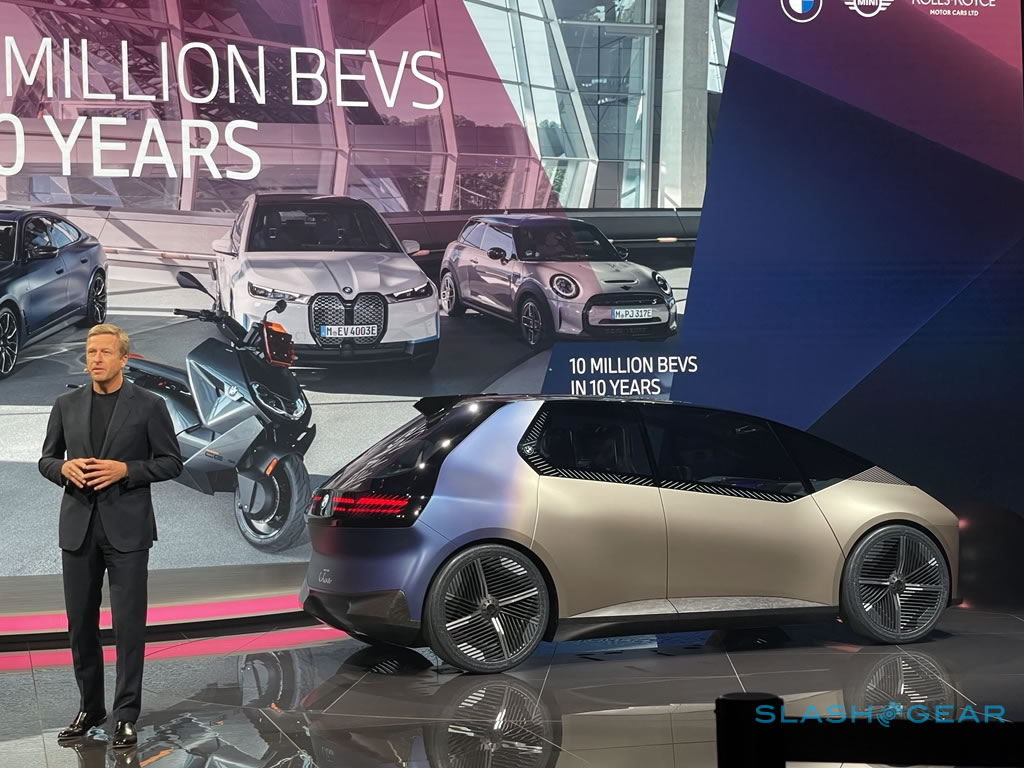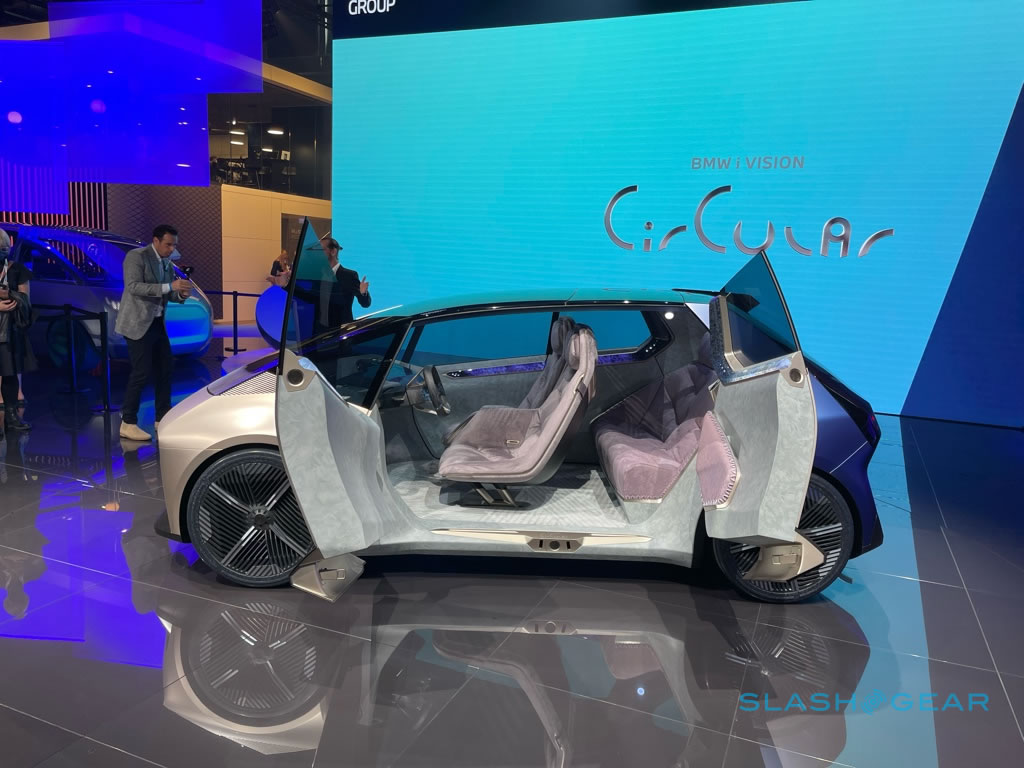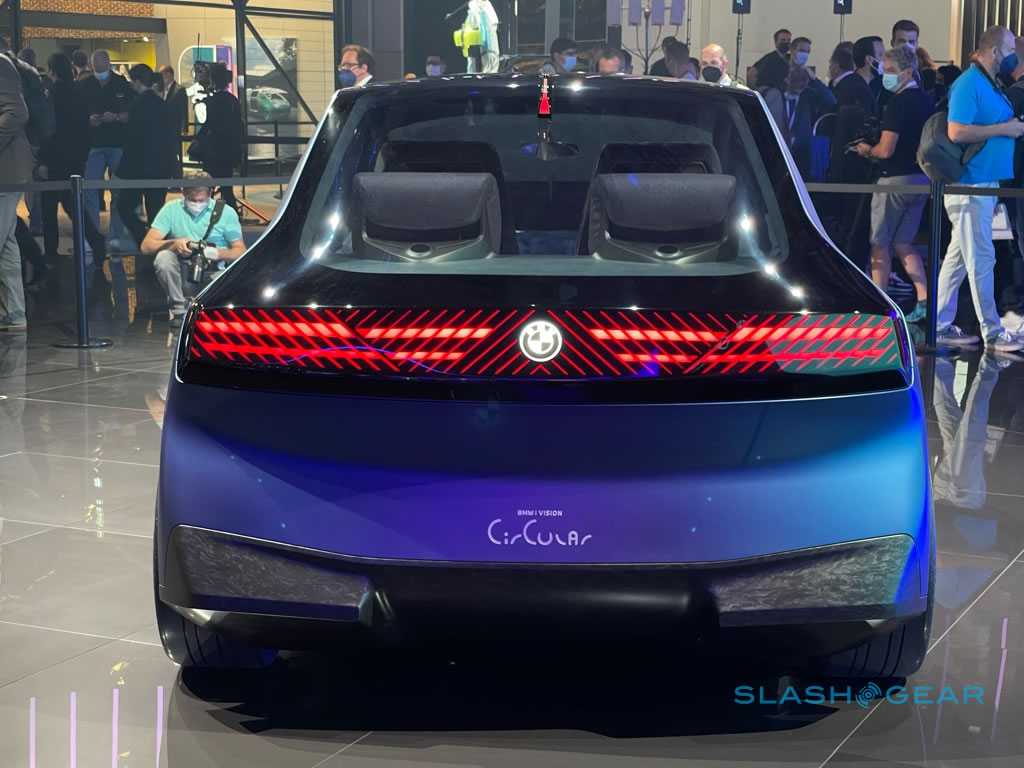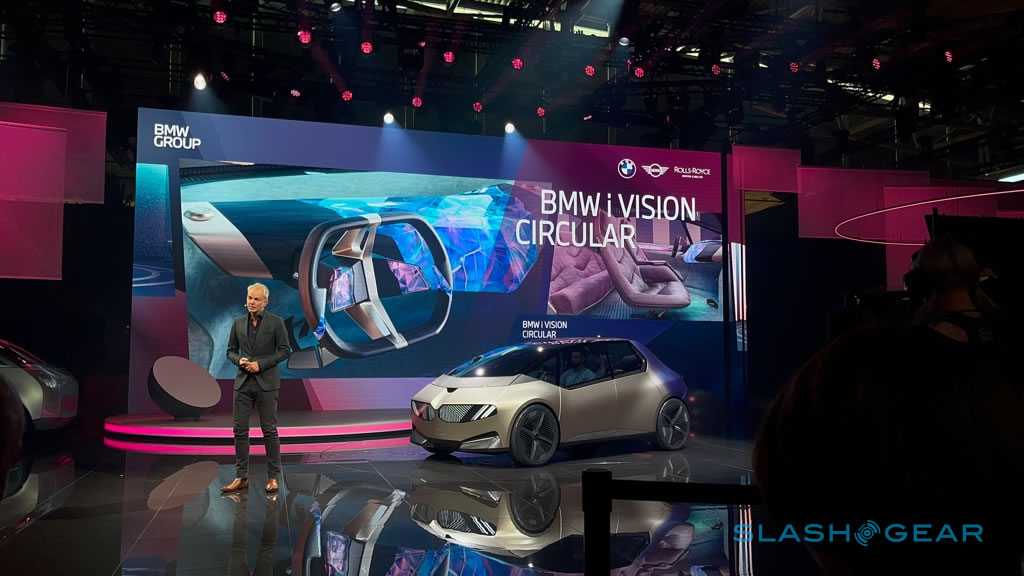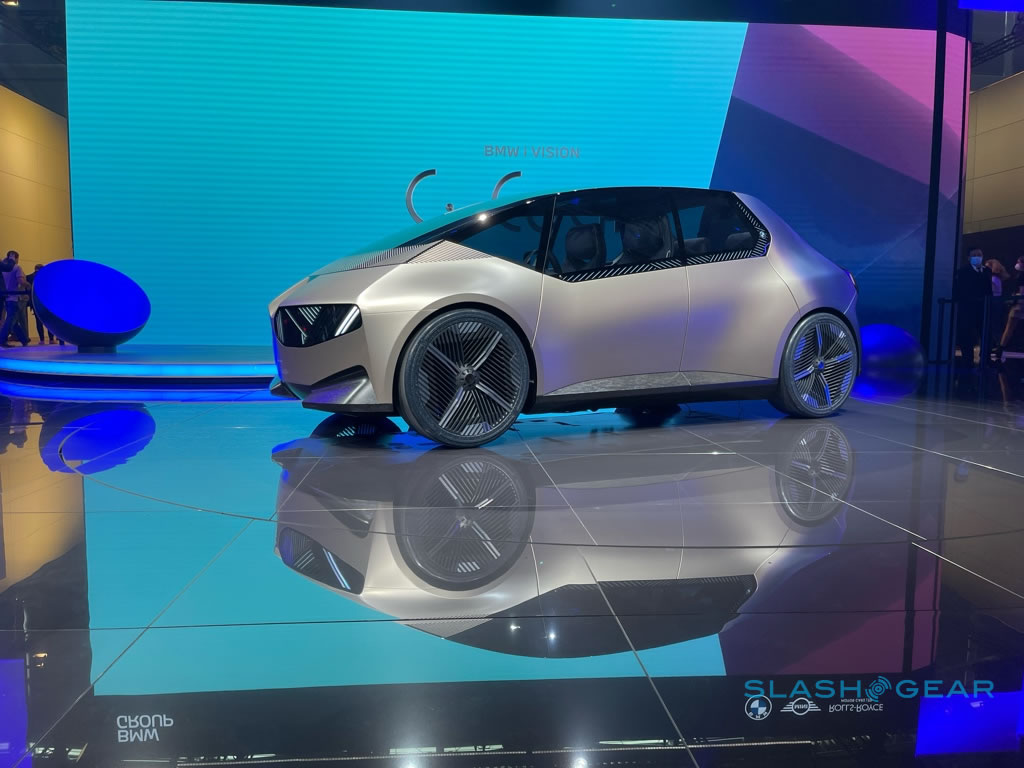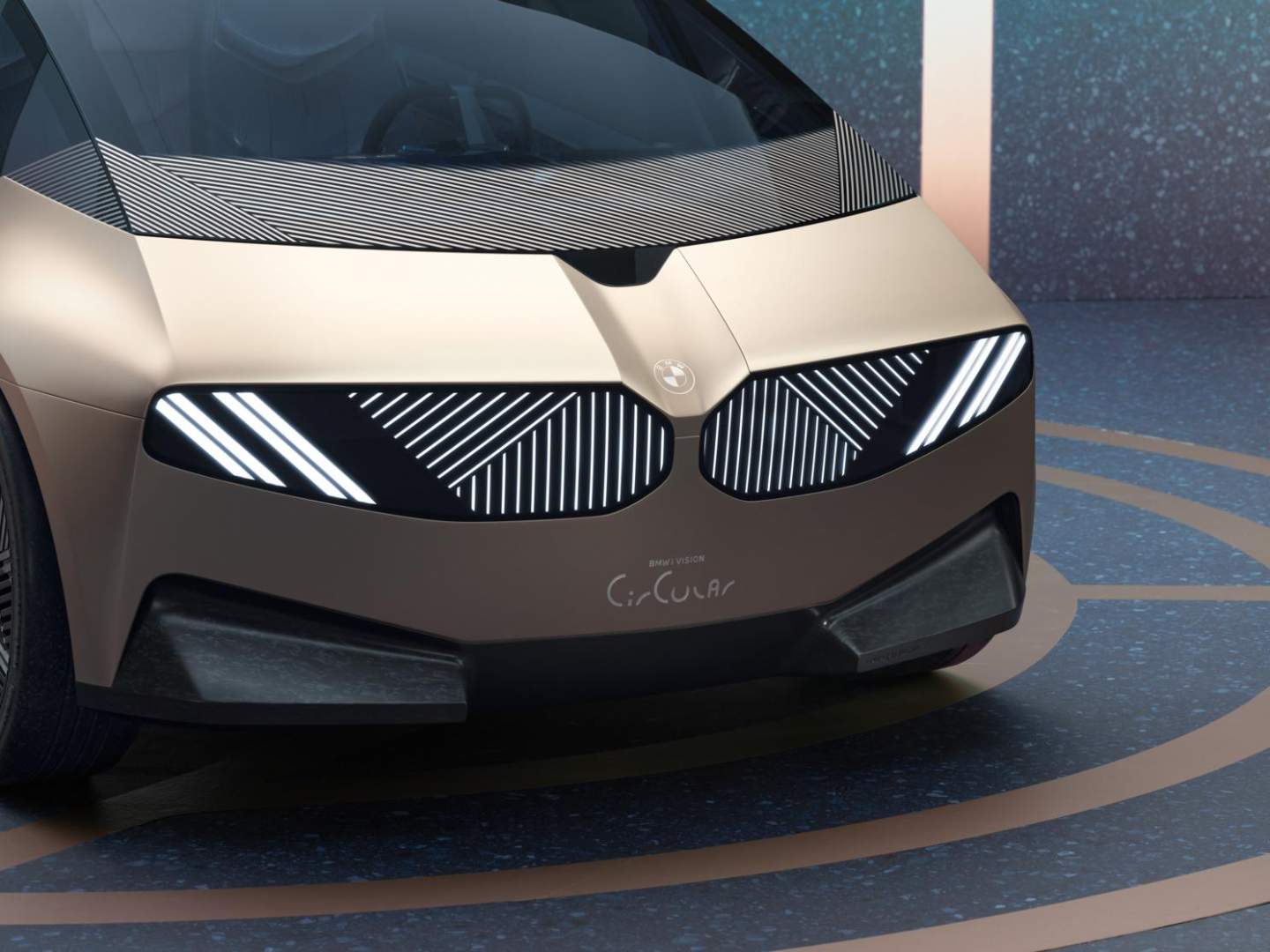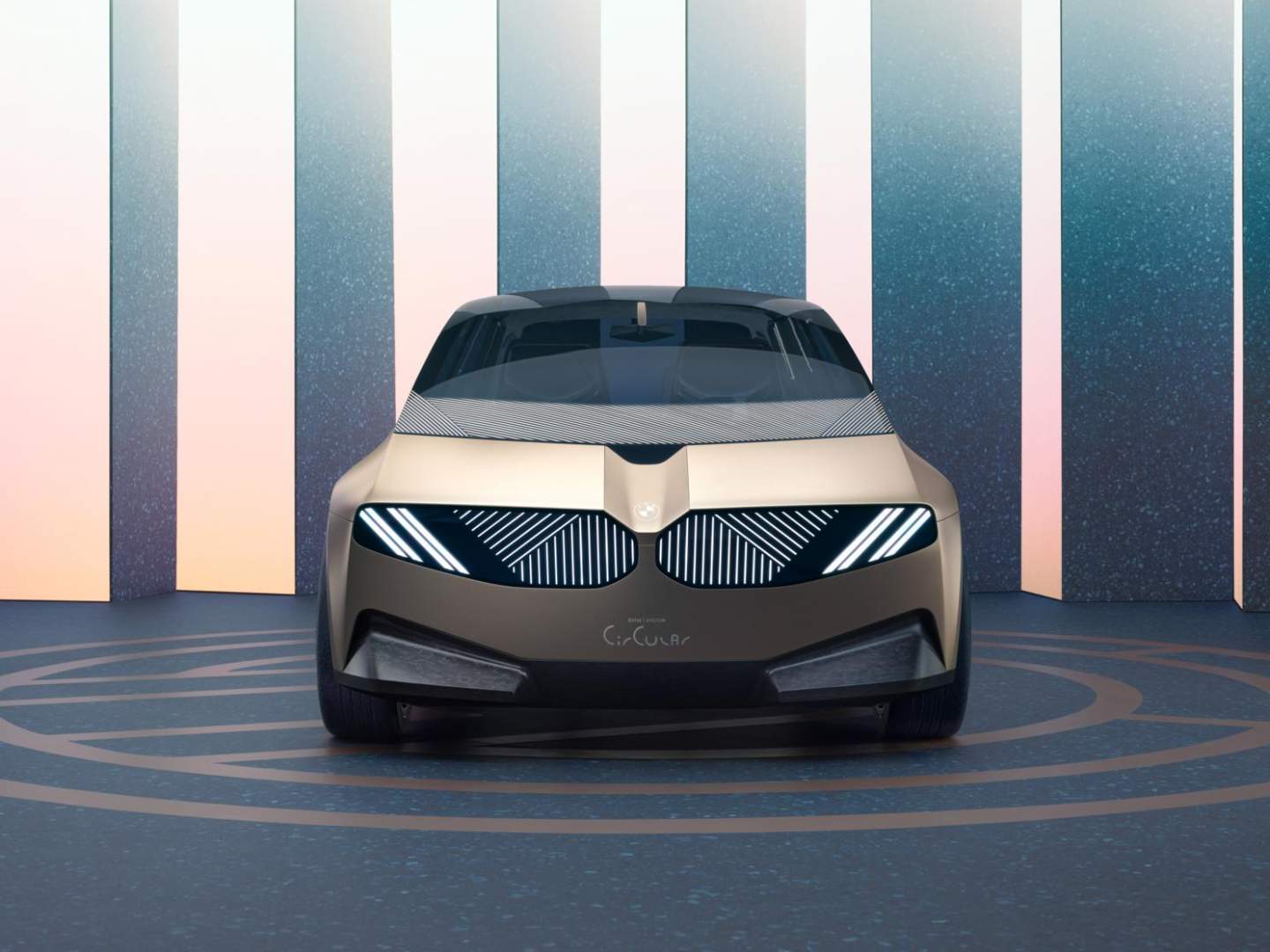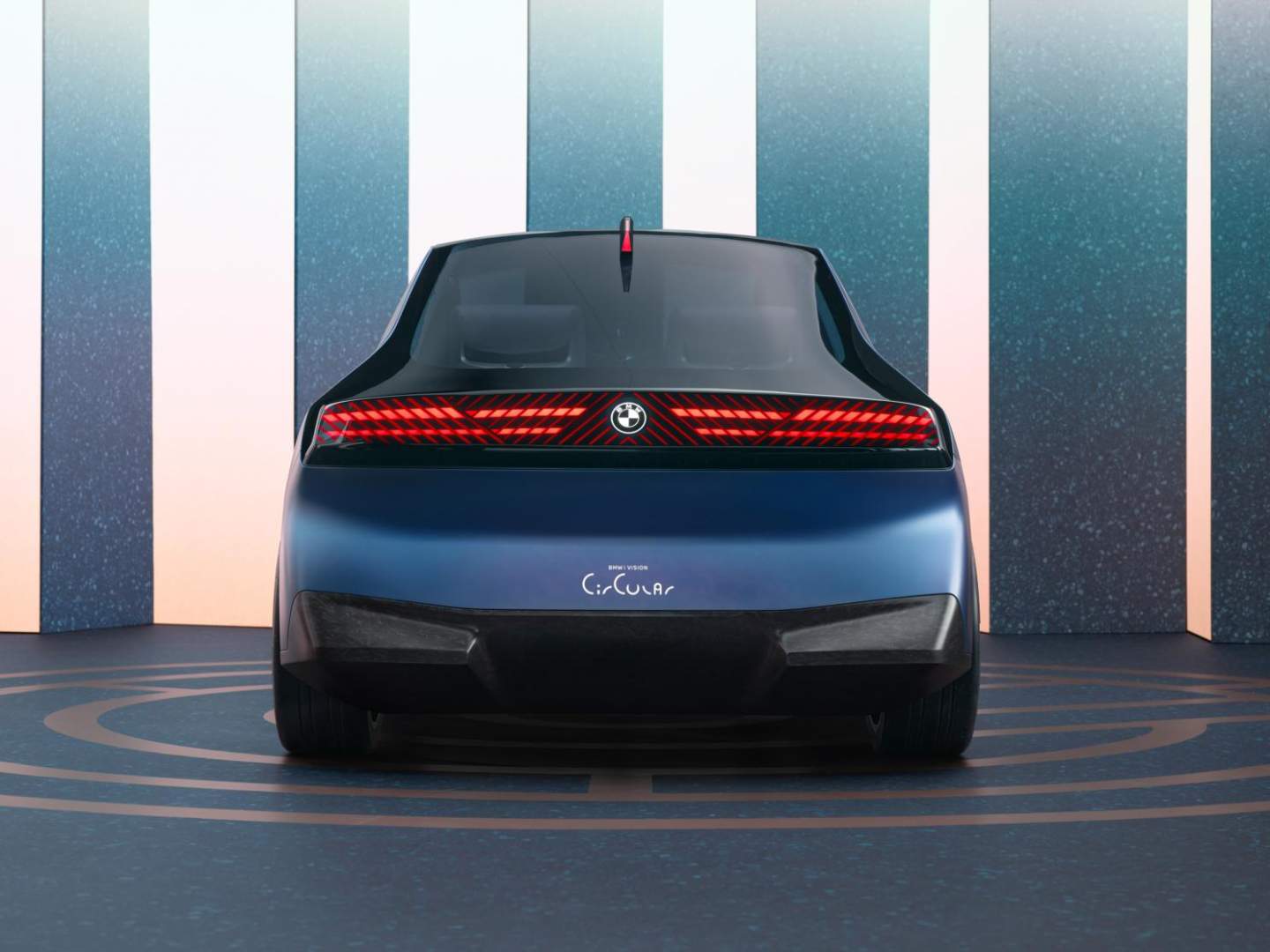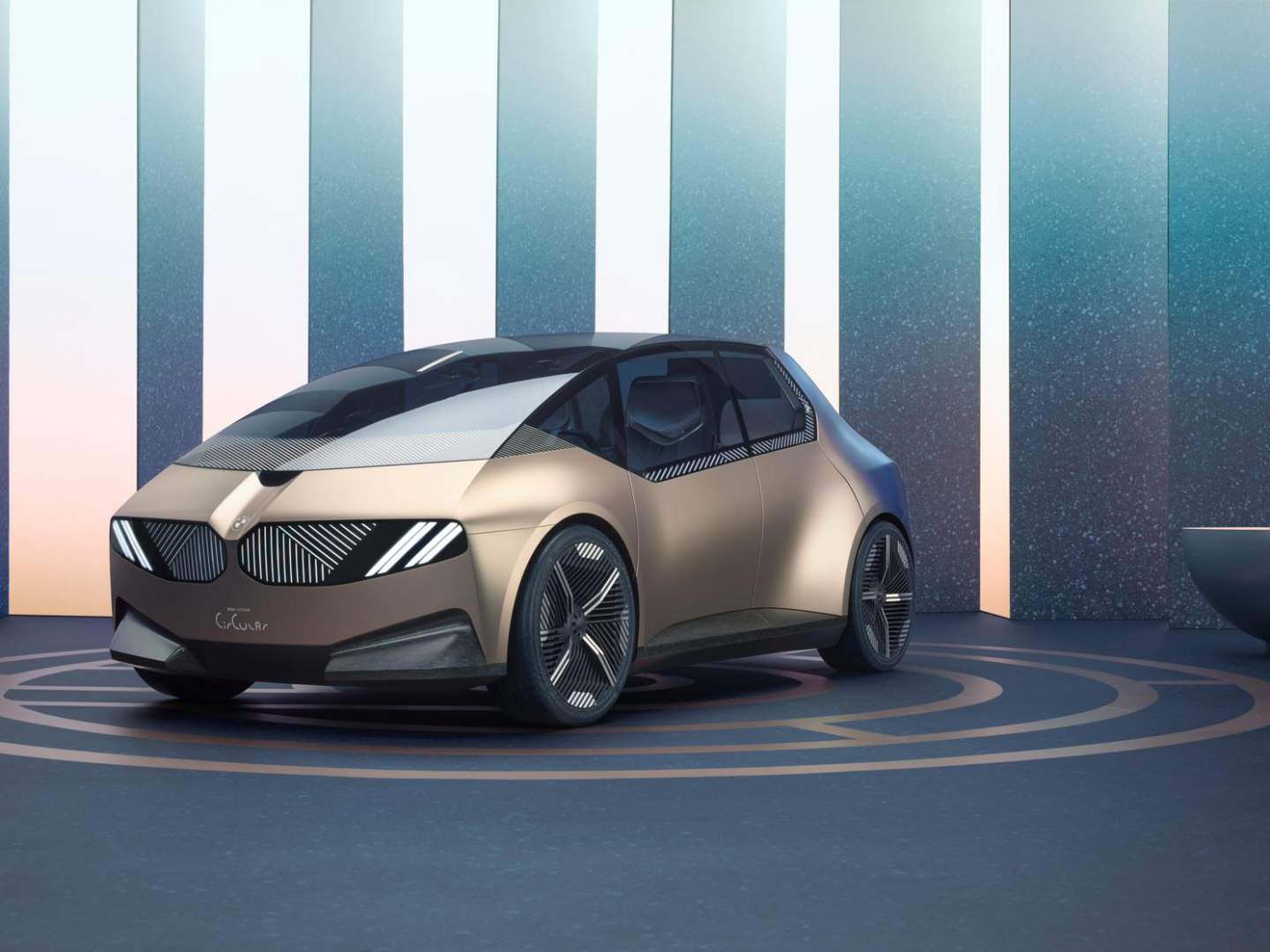BMW I Vision Circular Concept Sets The Highest Bar For Sustainability
The BMW i Vision Circular has a lot going for it, quite a feat for an all-electric concept car. BMW unveiled a few teaser images of its latest green concept car before the 2021 IAA in Munich. We knew beforehand the concept is a compact hatchback in the same mold as the i3 electric car. But unlike the i3, you won't mind sitting behind the wheel of BMW's latest I Vision Circular concept car.
The i3 is as quirky as EVs come. Still, the sharper and more angular i Vision Circular Concept is a fresher sight, made easier on the eyes as we all got acclimatized to the Hyundai Ioniq 5's retro-inspired wedge design. I wasn't expecting to get smitten by a concept hatchback among the many eye-candy at the German Auto Show, yet here I am. The i Vision Circular has an unbroken footprint, the mono-volume design consisting of the fewest parts possible. "We gave thorough consideration to circularity from the outset during the design process for the BMW i Vision Circular," explained Adrian van Hooydonk, head of BMW Group design. "As a result, this Vision Vehicle is packed with innovative ideas for combining sustainability with a new, inspirational aesthetic – we call this approach 'circular design'."
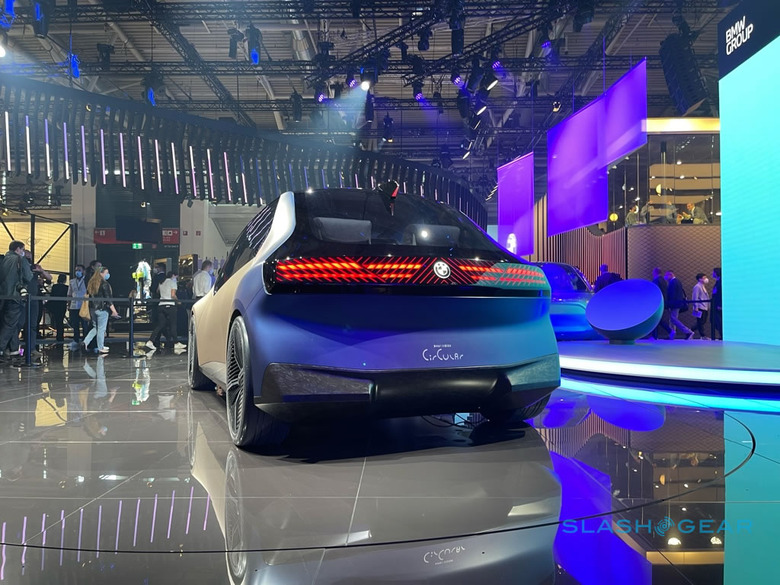
BMW's circular design philosophy has more to do with philosophy than actual shapes. Combining the four principles of RE:THINK, RE:DUCE, RE:USE, and RE-CYCLE, the i Vision Circular concept is a fully recyclable and 100-percent sustainable electric car, but you wouldn't know that just by staring at it. The wheels are at the limit of each corner for a planted, more aggressive stance like a hot hatch should, while its rising roofline and flared wheel arches imbibe the proportions of a sporty compact hatchback. And since the oily bits are gone, i Vision Circular has a spacious, luxurious interior in a smaller footprint.
Also worth mentioning from an aesthetic point of view, the absence of paint on the body panels is also worth mentioning, perhaps a quick nod to the iconic DeLorean MC12. But in the i Vision Circular, the secondary aluminum main body has a light-gold anodized finish, giving the vehicle a futuristic and hi-tech look. Meanwhile, the rear body is heat-treated steel and has a Temper Blue Steel color effect with an interplay of bluish-purple hues. "This shows how it will be possible to refine surfaces using innovative processes in the future without the need for paint finishes," said BMW. Moreover, BMW's heat treatment process preserves the "raw materiality" of the metals for optimal reusability and recyclability. Does this mean car guys won't have to wax or polish the cars of the future? Unless BMW's material processes can repel bird poo and environmental contaminants, I think clear coat paint is here to stay, but who knows?
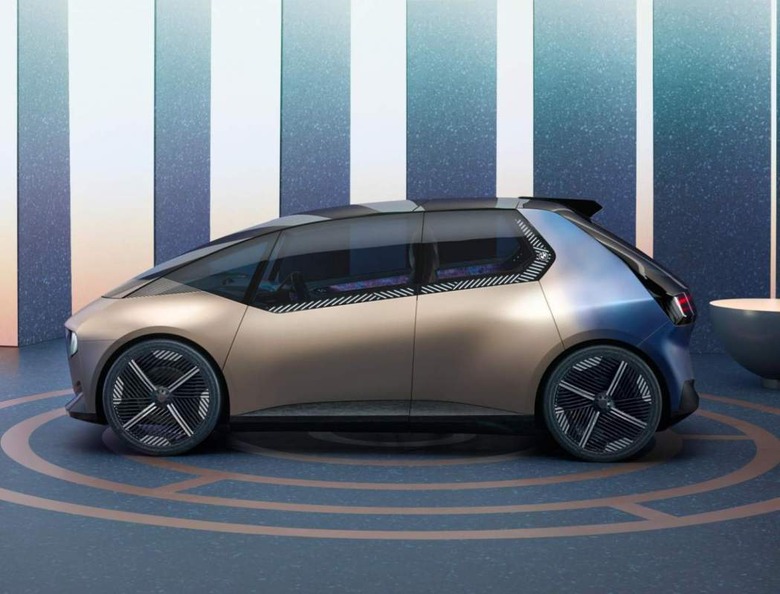
Meanwhile, the tires have a marginally transparent appearance, crafted from the finest sustainably cultivated rubber. The gumballs have a "terrazzo effect" to highlight the use of sustainable and recyclable materials during construction. In addition, the wheels have quick-release fasteners instead of conventional nuts and bolts, while the seats and instrument panel make no qualms of their detachability factor, a feature that BMW calls a "joyful fusion" between the parts and components of the vehicle. Nothing further highlights the sustainable and minimalistic features of i Vision Circular than the absence of hood ornaments, decals, and badges. Instead, the brand logo is engraved on the front, and the badge is lasered on the material to avoid extra add-on parts.
"BMW has always known how to resolve apparent contradictions in its products," said Domagoj Dukec, Head of BMW Design. "We have set ourselves the challenge of designing a 100-percent circular vehicle, while at the same time meeting our customer's self-evident expectations when it comes to lifestyle and luxury."
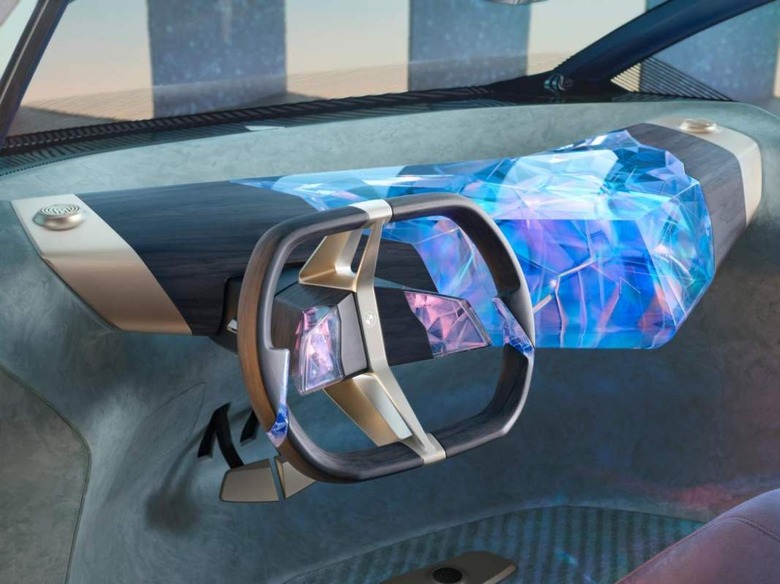
As expected, the i Vision Circular's interior has an open sense of space thanks to its rear suicide doors and glass roof. The cabin is a cacophony of mono materials and innovative joining techniques that avoid glue and other chemicals during assembly. BMW's Lego-type approach in building the i Vision Circular's interior not only ensures trouble-free dismantling when recycling the car, but it minimizes material waste. BMW's newest concept is a four-seat electric car with four individual lounge seats built on a light-gold aluminum frame. Unlike current EVs with immersive touchscreens, the i Vision Circular's instrument panel and center information display are on the windshield.
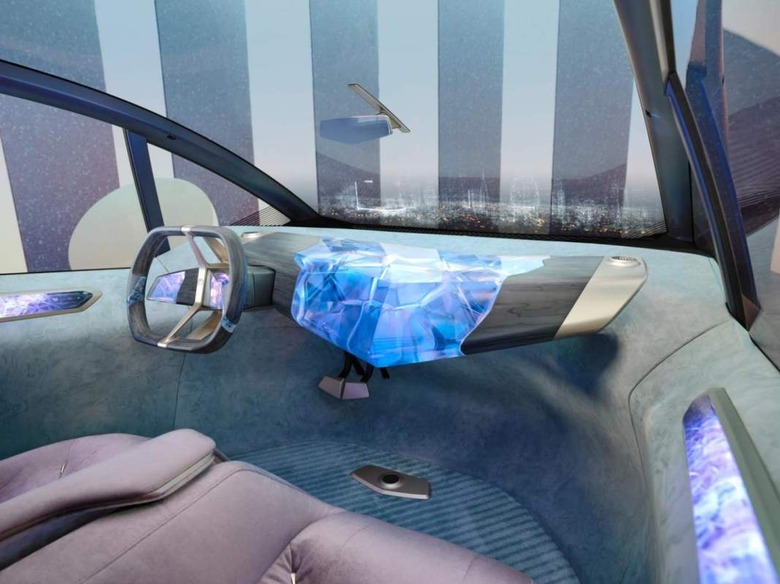
The concept's interior has enough recycled materials to get a definite thumbs up from Greenpeace. For instance, the steering wheel is 3D-printed from wood powder and has a warm and natural feel. Also, the deep pile carpets are from 100-percent recycled plastic, as well the seats and bumpers. I'm just glad it still has a steering wheel (and none of that zero steering wheel nonsense – I'm looking at you, Tesla), but it also has all the hi-tech safety features you expect from a car of the future. The all-electric powertrain can feed energy back via a vehicle-to-grid-scenario. It has real-time and long-term traffic data to calculate your route, while optimized speed recommendations aim to reduce waiting times at stoplights.
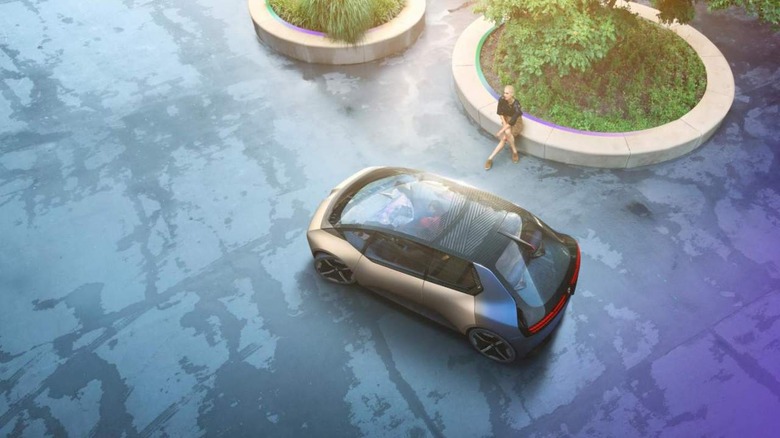
"The BMW i Vision Circular illustrates our all-encompassing, meticulous way of thinking when it comes to sustainable mobility," said Oliver Zipse, Chairman of the Board of Management of BMW AG. "This is a question of economic sustainability, too, as the current trend in commodity prices clearly shows the financial consequences in store for any industry that is reliant on finite resources."
Powering the i Vision Circular Concept is an all-solid-state battery using materials sourced exclusively from the recycling loop, said BMW. Even the powertrain has parts from secondary resources and bio-based raw materials. BMW is doing more with less in the i Vision Circular concept. It seems the German automaker is forging the right path towards creating a 100-percent sustainable and recyclable electric hatchback.

